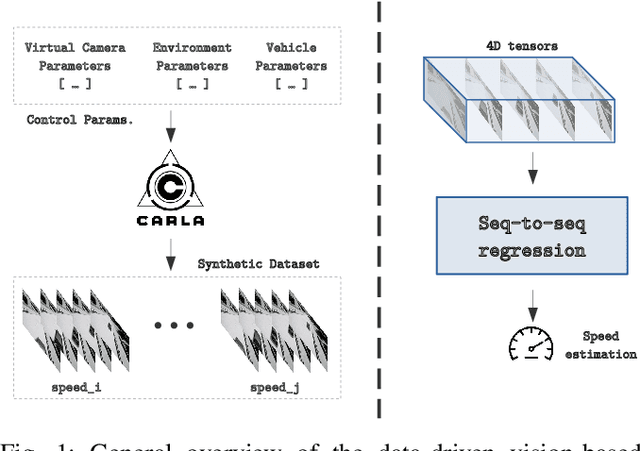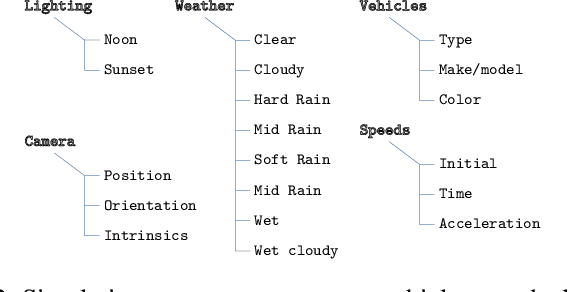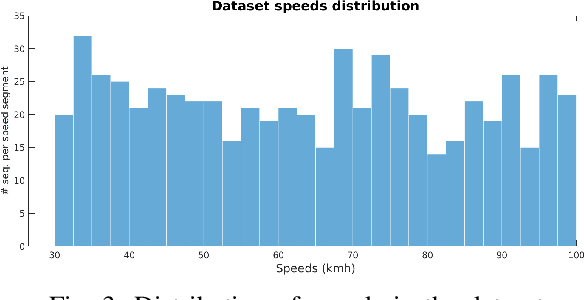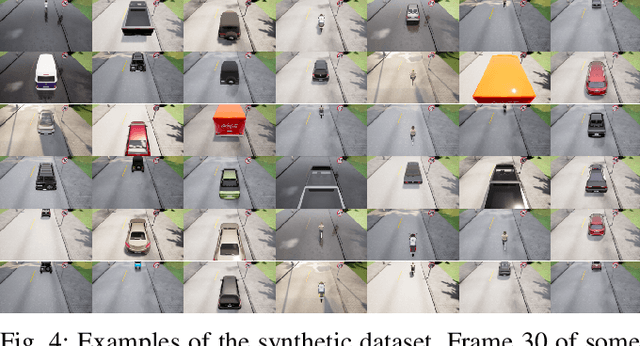Data-driven vehicle speed detection from synthetic driving simulator images
Paper and Code
Apr 20, 2021



Despite all the challenges and limitations, vision-based vehicle speed detection is gaining research interest due to its great potential benefits such as cost reduction, and enhanced additional functions. As stated in a recent survey [1], the use of learning-based approaches to address this problem is still in its infancy. One of the main difficulties is the need for a large amount of data, which must contain the input sequences and, more importantly, the output values corresponding to the actual speed of the vehicles. Data collection in this context requires a complex and costly setup to capture the images from the camera synchronized with a high precision speed sensor to generate the ground truth speed values. In this paper we explore, for the first time, the use of synthetic images generated from a driving simulator (e.g., CARLA) to address vehicle speed detection using a learning-based approach. We simulate a virtual camera placed over a stretch of road, and generate thousands of images with variability corresponding to multiple speeds, different vehicle types and colors, and lighting and weather conditions. Two different approaches to map the sequence of images to an output speed (regression) are studied, including CNN-GRU and 3D-CNN. We present preliminary results that support the high potential of this approach to address vehicle speed detection.
 Add to Chrome
Add to Chrome Add to Firefox
Add to Firefox Add to Edge
Add to Edge